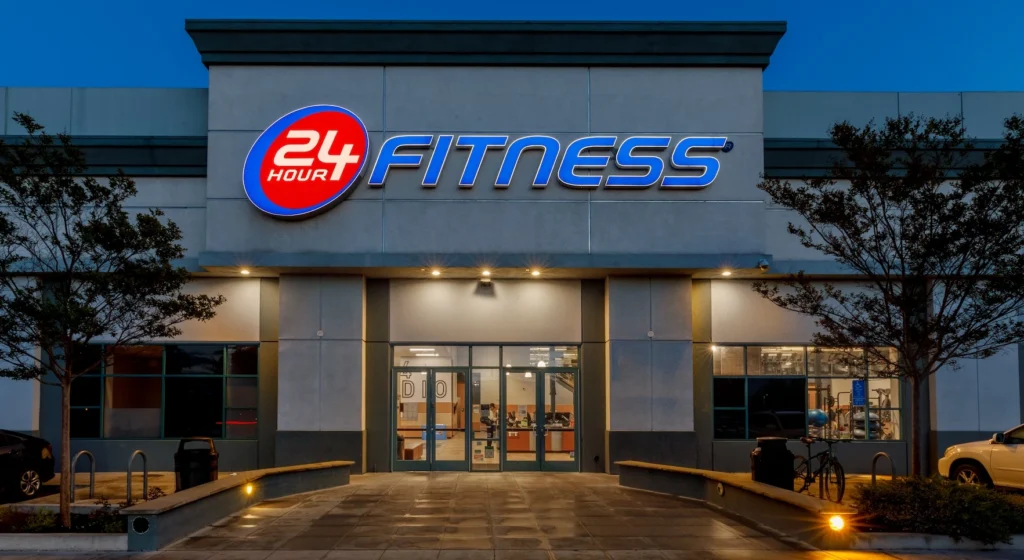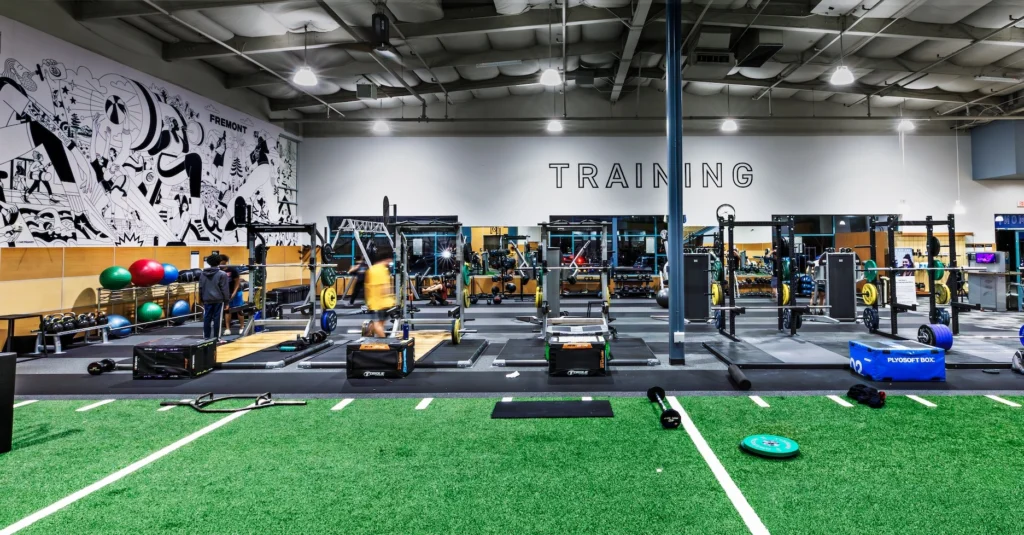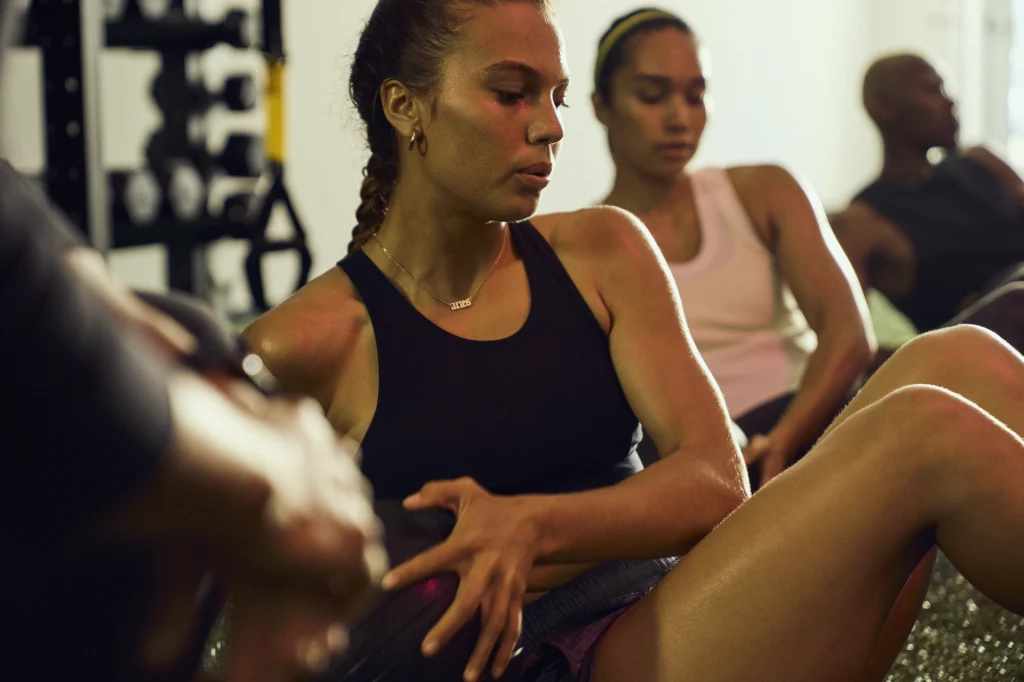
Under Sanft, 24 Hour Fitness has sought stability following its emergence from bankruptcy a few years ago, opting to invest in modernizing its existing locations rather than race to open up new ones
For Karl Sanft, leading 24 Hour Fitness is the job of a lifetime.
Sanft first became a 24 Hour Fitness member in 1993, long before he’d one day take over as the gym brand’s chief executive.
After a 20-year stint at Best Buy where he rose up the ranks to become senior vice president of U.S. retail operations, Sanft joined 24 Hour Fitness in 2019 as its chief operating officer. In December 2021, he took over as interim CEO. In June 2022, Sanft was formally introduced as the company’s newest president and CEO.
Sanft has been tasked with steering the big-box gym chain back to solid ground following a bankruptcy filing in 2020 that saw it close around 100 locations. Today, 24 Hour Fitness counts nearly 300 gyms in 11 states, and still stands as one of the fitness industry’s most iconic brands.
Under Sanft’s leadership, 24 Hour Fitness has sought stability, opting to invest in modernizing its existing locations rather than race to open up new ones.
Sanft sat down with Athletech News to discuss his first couple years on the job, outline his vision for the future of 24 Hour Fitness and share his perspective on how the fitness industry compares to other sectors.
The following conversation has been lightly edited for clarity and length.
Athletech News: You took over at a pivotal and trying time for 24 Hour Fitness. What have your early priorities been as president and CEO, and how have things gone relative to your expectations?
Karl Sanft: You hear a lot about the CEO job before you go into it, but some of it you have to experience. It’s different than you’d expect it to be.
The real challenge was stabilizing the organization. We were just coming out of bankruptcy and restructuring the brand. I love the brand, but you’ve got to be objective as well. The brand was overpriced, so we had to reconcile our pricing. And the brand needed to be refreshed.
We’ve been working diligently and spending money, as our financial health has allowed, to refresh and revitalize the member experience. That’s been our focus for the last couple of years, and will continue to be over the next couple of years.

ATN: How far along is 24 Hour Fitness on the pricing and brand refresh plan that you’ve implemented?
KS: Pricing is easy to adjust. For the amenities we offer, I think our pricing is right on par. If you look at some of the lower-priced competitors, they don’t have our amenity set when it comes to access to fitness professionals and wet areas like pools, spas, steam rooms and saunas, etc. So I’m happy with where we are from a pricing standpoint.
We’re at the beginning of our refresh. We’re touching a lot of clubs, buying equipment, and refreshing graphics, paint, lighting and floors. But we’re still at the beginning of that process.
ATN: Would you characterize 24 Hour Fitness a high-value, low-price (HVLP) gym brand, or does it play in a slightly higher pricing tier?
KS: I try not to go with a label. Here’s what I would say: our pricing is probably just a bit higher than HVLP (gyms), but our amenity set justifies that price, and our gym floor is as good as anybody’s. That’s where we’ve invested, and that’s where members show their appreciation for us.
ATN: How has the gym floor evolved over your five years at 24 Hour Fitness, particularly post-pandemic?
KS: COVID had a real impact. I think people (now) enjoy hybrid fitness more than ever. For some aspects of their fitness, they enjoy being outside. What I see in the clubs is more of a focus on strength. An example of that is Olympic lifting and half racks. It’s not that people don’t do cardio, but they find other ways of getting their cardio done. Women and men alike are focusing on strength like I’ve never seen before, and it’s exciting.

ATN: What’s the biggest challenge in running a big-box gym brand with around 300 locations?
KS: It’s really all about consistency of experience. We like touting how many clubs we have but the members don’t really care. It’s just, “Is my gym excellent? Is my gym inspiring? Are the people in my gym good to me? Is the gym clean? Do the machines work?”
There’s also this interesting mix: How do you take advantage of scale, but then how do you embrace local? Do you know the community you serve? Do you know what’s different about it? Are you set up in a way that matters? If you put the same equipment in all gyms and don’t have the right equipment for (a specific) gym, that’s something you have to watch out for. It’s about really understanding what it is that your members want locally.

ATN: What are your goals for 24 Hour Fitness over the next few years? Do you have any expansion plans?
KS: I’ve been focused on getting the company healthy from the inside out. What that means is that you can’t just build 10, 20 clubs a year and not invest in the clubs you have. The headline of new clubs is always exciting, but when you invest in refreshes and remodels, it’s amazing what it does.
We’ve got a club in Texas right now that’s all torn up, the restrooms are being redone, the floors are being redone, the tiles are being redone, but the member surveys are going up. Why are people excited about the experience when it’s a hot mess? The answer is that they just love seeing you invest in their gym.
As a secondary focus, we’ll reposition and we’ll fill in appropriately. We built a couple of clubs last year, and we’ll build a few clubs in the next couple of years. We won’t be opening new markets in the next couple of years, but we’ll be bolstering our position in our existing markets.
ATN: We’ve talked about the rise of strength training. Do you have any predictions about what may be coming next?
KS: Mobility is something to really think about. I don’t do Pilates, but I’m excited by it and I can see the benefits.
I’ve been a (24 Hour Fitness) member for 31 years. I started in my 20s, now I’m in my 50s. My workout has entirely changed over that period of time. People get injured as they get older because they just don’t have the stability, mobility and flexibility. I think that’s where the industry is going to go – “fit for life” versus “fit for the gym.”

ATN: As someone with a lot of high-level experience in another industry, how do you view the fitness industry?
KS: It’s a small industry, and people stick together. I know many of the CEOs in the industry. We help one another, we talk about ways the industry can be more prepared, God forbid, if something were to ever happen again like what we experienced with COVID. I’ve been humbled by the way far-more-tenured industry leaders have been willing to let me be a part of the dialog and the conversation.
There’s some legacy stuff – I don’t know how long it takes for it to go away – where people say, “These are the bad things about health clubs, you can’t quit them, you can’t do this, etc.” I don’t see any of that, but I do think the industry still has a hangover, experientially, about some of the things it used to do and the way it used to sell.
ATN: Is there anything you’d like to see the fitness industry change or improve upon?
KS: I think we just need to do a better job of sharing our voice and helping our members gain leverage. The industry wasn’t considered essential (during COVID), which is pretty amazing, and we take that as a challenge for ourselves.
I’m a part of a community (Health & Fitness Association, formerly IHRSA) that focuses on the PHIT Act. So I think the industry is focusing on coming together, coalescing around a few things and using our collective power for good.
